How to transfer a gas pipe in an apartment: transfer rules and location tips
The gas communication device in the apartment is subject to certain requirements, therefore, the independent installation and connection of equipment, as well as the transfer of a gas pipe to another place is strictly prohibited.
All issues regarding the laying of internal and external gas pipelines are decided by the gas service, without the permission of which you can only move the stove to a limited distance.
We will tell you how to get approval for the replacement of the gas pipeline, and also describe the technology for transferring the in-house pipeline. The proposed instructions are not a guide to action, all work must be carried out by a representative of the gas service.
The content of the article:
Reasons for moving gas pipes in the kitchen
All work on the transfer and replacement of metal pipes, especially those requiring welding, is carried out by representatives of gorgaz or another authorized organization. After receiving a statement from the residents, they are always interested in the reasons for the planned transformations.
Most often, you need to change the wiring of pipes in the kitchen without changing the layout and transferring equipment to other rooms.
The reasons may be different:
- replacing old equipment - buying a gas water heater, stove or boiler - for which a little more space is needed;
- major repairs in the kitchen;
- moving the gas stove from the window by 0.5-2 m towards the sink;
- change of place gas meter installation;
- transfer of a horizontally located pipe from a great height under the countertop, etc.
Often, pipe transfer is required in new buildings, where the initial location of significant kitchen facilities does not lend itself to logic and explanation: suppose if in a 15-meter kitchen a gas stove is near the window, the sink is in the opposite corner, and the hood is on the other side, above the entrance to the kitchen.
We have to correct the mistakes of the designers, move the stove closer to the sink, so that cooking takes place in comfortable conditions.

The most common reason is the purchase of a new kitchen set with built-in equipment (oven and hob). In this case, the pipes must either be shortened or extended, depending on the planned installation site of the devices.
If you want to know how best to transfer the gas pipe in the apartment with redevelopment, we recommend that you contact the design organization to draw up a transfer scheme.
The fact is that in typical city apartments it is forbidden to reinstall risers, pipes, as well as any gas equipment in living rooms, and even permission to combine a kitchen and a room is also required.
Obtaining approval for the replacement of the gas pipeline
Whether transfer is possible or not, only authorized bodies can decide, that is, the gas service of your city (region). Only a qualified specialist is entitled to engage in any dismantling and installation work. Of course, without coordination, the transfer of pipes cannot be carried out.
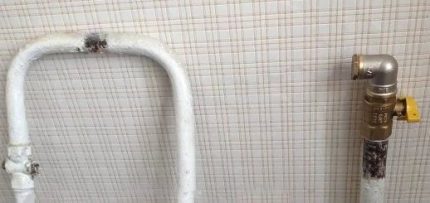
The permission is issued in the following sequence:
- Find out the contact details of the gas service at the place of registration, contact specialists, explain the situation, consult.
- Make a statement (in a standard form) that will “start” the approval process.
- Based on the application, a gas service representative arrives at your home. Time is specified in advance.
- The specialist inspects, listens to wishes, answers questions. Often at this stage you have to change plans, since the desired transfer does not meet the safety requirements (a preliminary study of the gas pipeline installation standards will save you from this unpleasant moment).
- Approval of the final transfer scheme, budgeting. All documents are executed by the organization that provides the services. Without the consent of the landlord, work is not performed.
- If the conditions of the transfer are satisfactory, pay for the service on receipt and agree on the start time.
The approval process usually takes several days; it can be extended for a long period for one reason only: if the property owners and gas service representatives have not found a compromise.
Any offending factors gas stove installations (boilers, meters, columns), can cause a failure in the transfer of pipes.
General requirements and regulations
In order for the coordination process to go smoothly, it is better to familiarize yourself with the basic provisions of the gas system in residential premises in advance. As a cheat sheet, you can use the regulatory document - SNiP 2.04.08-87 * (current version).
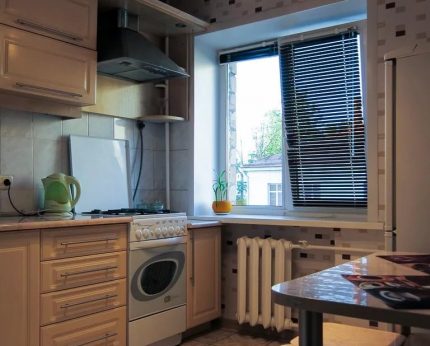
If the walls and ceiling are made up of flammable materials (wood), they must be plastered or coated with metal sheets.
Gas pipes are used to transport fuel to consumers - stoves, ovens, columns, so the location of the equipment is important no less than pipe layout.
It is also necessary to know that the stopcock cannot be cut off the pipe. This is an essential element of the gas system. Moreover, when changing the location and gas tap replacement, you must ensure that it is in direct accessibility.
If it is placed under the countertop, access should be through the cabinet door (without the back wall) or through the opening fragment of the countertop.
Procedure for transferring or replacing
It is not recommended to change anything yourself, even flexible eyeliner. The cutting, extension or transfer of pipes should be carried out by a gas service representative. However, to know the sequence and some nuances of actions when working with pipes will not hurt the owner of the house.
# 1: Preparing to work with pipes
Usually a team of workers (most often 2 people) comes within the next week after approval. At this point, it is already known which sections will be dismantled or extended, whether additional equipment will be installed, for example, gas water heater. Consider what else is worth considering.
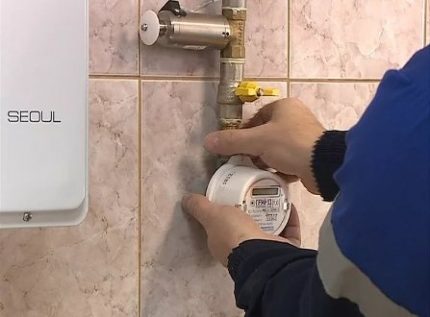
All equipment used in the kitchen belongs to the owner of the apartment and is purchased at his expense, therefore, it is better to immediately ask what else you need to buy to transfer appliances and work with pipes.
If you are talking about connecting a stove or oven, you will have to buy a bellows hose of a certain length. Installers bring metal pipes with them, their cost is included in the total amount of payment for services.
In order to avoid hitches, and the work went quickly, you need to free up space from excess furniture or other items. Everything that cannot be removed must be covered with a dense non-combustible material.
# 2: dismantling the old structure
Most likely, when transferring the pipe, you will need to cut off a piece of the old and build up a new one, but in a different direction. To do this, the master, using a special tool, removes unnecessary pipe sections.
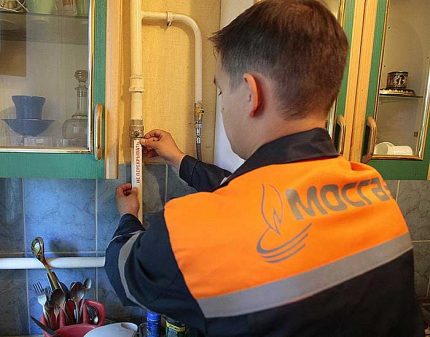
When dismantling the outlet leading from the riser to the consumer, it is necessary to leave a small area on which the gas valve is mounted. This horizontal piece of pipe can neither be removed nor changed. The only exception is pipeline damage requiring a complete replacement.
Sometimes residents of the last floors require that they remove a large fragment of a pipe rising 1.8 m from floor to ceiling, and then bent down 180 °. It is strictly forbidden to cut the pipe and install on the left segment the crane. The only way out is to digest the pipe so that the crane can be installed under the countertop, to a height of 0.75 m.
# 3: Gas distribution options
The transfer of pipes always occurs according to one scheme: they are moved parallel to the ceiling or walls, since diagonal and any curved placement is prohibited. Therefore, most often the layer from the riser is lowered down, under the countertop (less often raised), or a vertical fragment is transferred to the right / left.
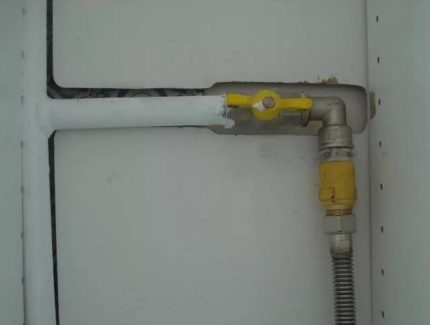
When changing the direction of the pipes, remember the following rules:
- internal gas wiring is an open system, all covering elements are camouflage in nature and should not be firmly fixed;
- it is forbidden to lay the pipeline through ventilation ducts, as well as doors and windows;
- metal structures are mainly used; flexible eyeliners allowed at equipment connection areas, but their length should not exceed 3 m;
- a rigid method of connecting pipes and hoses with pipes is used;
- pipe transitions through walls / partitions are equipped with special adapters - sleeves.
Any work associated with the transfer of pipes should begin with a gas shutoff. The service provider is responsible for this.
# 4: Welding metal pipes
According to the norms of SNiP, any changes in the position of the pipes must occur by welding. Pluggable connections of two segments are prohibited.
Threaded connections are used only for the installation of gas meters, household equipment and valves.
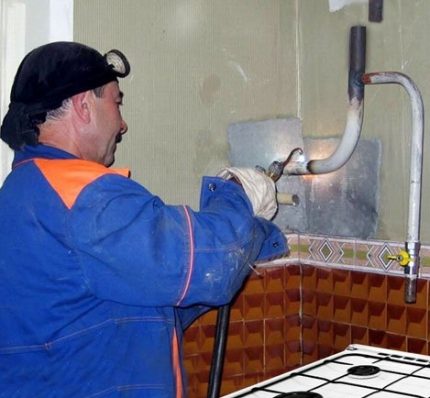
Places fired by welding have an unpresentable appearance, and also require protection against corrosion. After finishing work, they must be treated with waterproof paint for metal, matched to the color of the walls.
# 5: Using bellows hoses
Before you build up or move the gas pipe, you need to consider the option flexible transition mounting. It is carried out using a bellows hose.
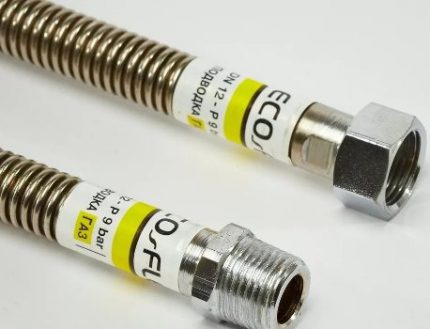
Previously, rubber and rubber-fabric products were used, but the bellows was stronger than outdated materials. At its core, it is a metal or composite corrugation, but having unique qualities.
For a long time, it retains tightness and elasticity even with active mechanical stress. The shell structure is maintained even under strong pressure of the transported medium or at constant mechanical stress.
Bellows connectors are also installed by a gas service worker. He performs the connection of boilers, columns, stoves and ovens in accordance with all the rules of the PUE and, if necessary, uses adapters and seals, for example, FUM tape.
They try to hide gas pipes in the kitchen behind decorative panels or furniture. Pipeline masking options are described in this article.
Conclusions and useful video on the topic
With the advent of long flexible hoses, the transfer of the internal gas pipeline has become less relevant, but in some cases it is still necessary to contact the gas service. The most common reasons for requests are in the video provided.
Secrets of masking gas pipes:
About pipe and crane transfer:
Welding and meter transfer:
Finally - about the consequences of the illegal transfer of gas pipes. If you plan to cut off a piece of a gas pipe or connect household equipment, you should be aware of the administrative and criminal penalties.
The minimum fine for unauthorized work is 2 thousand rubles, and if a person suffers as a result of improper work, then he faces up to 5 years in prison.
To all those interested in the issue of transferring a gas pipe in an apartment, we suggest leaving comments and asking questions. The contact form is located in the lower block.

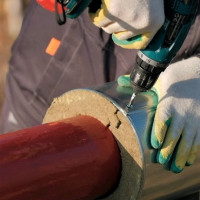 How to insulate a gas pipe on the street from condensation: an overview of the best materials and installation instructions
How to insulate a gas pipe on the street from condensation: an overview of the best materials and installation instructions 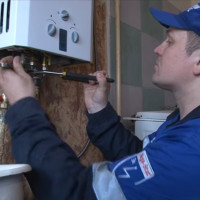 What to do when water gets into the gas pipe: a review of options for resolving the problem and possible consequences
What to do when water gets into the gas pipe: a review of options for resolving the problem and possible consequences 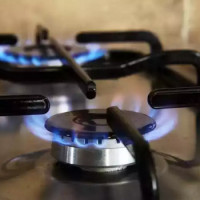 DIY gas stove connection: how to install a gas stove in an apartment step by step
DIY gas stove connection: how to install a gas stove in an apartment step by step  How to cut a pipe with gas: the procedure, rules and stages of work
How to cut a pipe with gas: the procedure, rules and stages of work 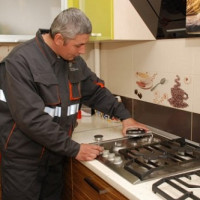 Do-it-yourself gas hose replacement: installation rules
Do-it-yourself gas hose replacement: installation rules 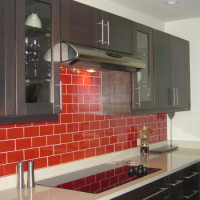 How to sheathe a gas stove: options and instructions for decorating the wall near the gas stove + security measures
How to sheathe a gas stove: options and instructions for decorating the wall near the gas stove + security measures  How much does it cost to connect gas to a private house: the price of organizing gas supply
How much does it cost to connect gas to a private house: the price of organizing gas supply  The best washing machines with dryer: model rating and customer tips
The best washing machines with dryer: model rating and customer tips  What is the color temperature of light and the nuances of choosing the temperature of the lamps to suit your needs
What is the color temperature of light and the nuances of choosing the temperature of the lamps to suit your needs  Replacement of a geyser in an apartment: replacement paperwork + basic norms and requirements
Replacement of a geyser in an apartment: replacement paperwork + basic norms and requirements
A private company was conducting gas in my apartment. One year later, when the gas service conducted the PTI, it turned out that the gas piping in the kitchen and the gas meter did not correspond to the project. Naturally, I turned to a private company that supplied me with gas, and they remade me for free. Of course, I didn’t do it myself, and according to the rules, such work is carried out only by organizations that have the appropriate permissions.
We have a geyser in the kitchen, and we want to transfer it to the bathtub during the repair. The neighbors have already done similar work, that is, such a transfer in our house is possible. But I didn’t quite understand: first you need to invite representatives of gorgaz to give the go-ahead, but already having permission in your hands, contact the organization that will carry out the work, right? Should such an organization have any special license or certificate?
Hello, first you need to order a sketch or project from the organization serving the gas pipeline, and only then you can contact proven companies! However, there are nuances that make it possible to avoid contacting Gorgaz.
Hello. LCD RF Article 26 - please read. A little surprised that neighbors were allowed to install the column in the bathroom because of SP 62.13330.201, paragraph 7.6 and SP 41-108-2004, it is necessary to clarify whether these acts have changed. However, you still agree, they will tell.
About the license - yes, of course.
I want to make the gas pipe lower (put the crane at a height of 300 mm from the floor). So it is possible?
Hello. I will quote “Appendix 2 to the Resolution of the Government of Moscow of November 2, 2004 N 758-PP, (as amended by the resolution of the Government of Moscow of 01.30.2013 N 34-PP)”:
“3.21. The gas pipeline to the stove may be laid at the level of the connecting fitting. In this case, the shut-off valve is installed at a distance of at least 20 cm from the side of the stove. At the top wiring, the shut-off crane must be installed on the lowering to the plate at a height of 1.5-1.6 m from the floor. It is allowed to connect gas appliances to the gas pipeline through a flexible sleeve that does not have butt joints and has a heat resistance of at least 120 degrees. The service life is set by the passport on the flexible sleeve, after which this flexible sleeve must be replaced“.
In any case, you will have to coordinate this moment with the gas service.
Hello! Bought an apartment. They called the gasman because of problems with the geyser - it turned out that the residents before last had shortened the gas pipe to the geyser.No projects or permissions were given. Is it possible to find out somewhere whether the work was agreed upon (if they were carried out, then up to 95 years)?
Hello. All such work is carried out with a written act and statement. That is, the gas service should have such documents with the previous owner as well. If they are not, there was no agreement.
Hello. Please tell me, How much will it cost to transfer a gas point from one room to another? Its design, and the design of a gas boiler (2-circuit turbocharged mounted). Thank.
Hello. As I understand it, do you want to carry out an engineering reorganization of the gas system? Unfortunately, we definitely cannot answer your question. Here, work is required to amend the project or to completely rework the project. Depending on the option, prices are gradationally changing.
In addition, the rates depend on the organization issuing the transfer. I recommend that you apply for preliminary calculations to your resource supplying organization with an old project and a copy of it, on which you yourself will trace where and how you want to transfer your equipment.
The neighbors made a redevelopment in the kitchen. They closed the gas pipe with drywall. Where to file a complaint?
Hello. To the gas service or the Criminal Code.
Good afternoon. Did repairs in the kitchen. Cut off the gas by the gas supply organization. I hid the pipe partially behind the box (non-separable, about 60 cm high), partially behind the kitchen cabinets. Access to the pipe, respectively, remained partial. Now there is a gas leak check in the house, a decision was made in my apartment that the pipe was protected. Are they right, should I dismantle everything? Or maybe they should have special equipment to check for leaks (now they have a sensor with a length of not more than 15 cm)?
Hello. The decision is lawful. Access to the gas pipeline must be complete for a visual inspection and the possibility of carrying out repair work, and it does not matter if your gas is cut off, transit laying goes through your apartment (as we understand). And the rules are the same for everyone.
At the next inspection of the meter, I asked the employee - how can I change the passage of the gas pipe? You need to raise it higher. He made a similar transfer with his partner. Naturally without coordination with the gas service. How to legalize these changes?
Hello. This is a very difficult question. Why did you allow a gas service employee to your gas equipment without drawing up documentation, a receipt, and even without an act of acceptance of work? Look for this employee and let him agree on the spot so that you receive the relevant documentation - approval.
Here it’s really possible to try to agree on agreement upon the fact.
A neighbor led a gas pipe around the perimeter of the apartment from the floor 15 cm without coordination with the gas service. When the gas was supplied, the supervisory service did not find a violation in its actions. How legal are its actions and where can I find all the information about it?
Hello. Your neighbor carried out the reconstruction of the engineering system without coordination, in theory, they should have been forced to redo everything, but as a rule, if the system does not interfere with the neighbors, then the conversion can be left.
However, he also violated the fact that the gas system is prohibited by law from invading without the involvement of specialists. And they couldn’t just let him down that moment. Some kind of dark story. Most likely, there were approvals, they just did not notify you. Usually such actions are not let down just like that.
Good evening!
It says “Sometimes the residents of the last floors require that they remove a large fragment of a pipe rising 1.8 m from floor to ceiling, and then bent down 180 °. It is strictly forbidden to cut the pipe and install on the left segment the crane. The only way out is to digest the pipe so that the crane can be installed under the countertop, to a height of 0.75 m. ”
I have just the top floor. It is not very clear whether it is possible to digest the pipe so that it is all below the countertop, and the crane too.
I live on the second floor. Below me is a cafe bar. Gas pipes start from my apartment, pass through a corridor, a bathroom and exit to the kitchen.
With overhaul, can I refuse such a new pipe bend? And what would change the project? Would you take a pipe along the facade right into the kitchen?